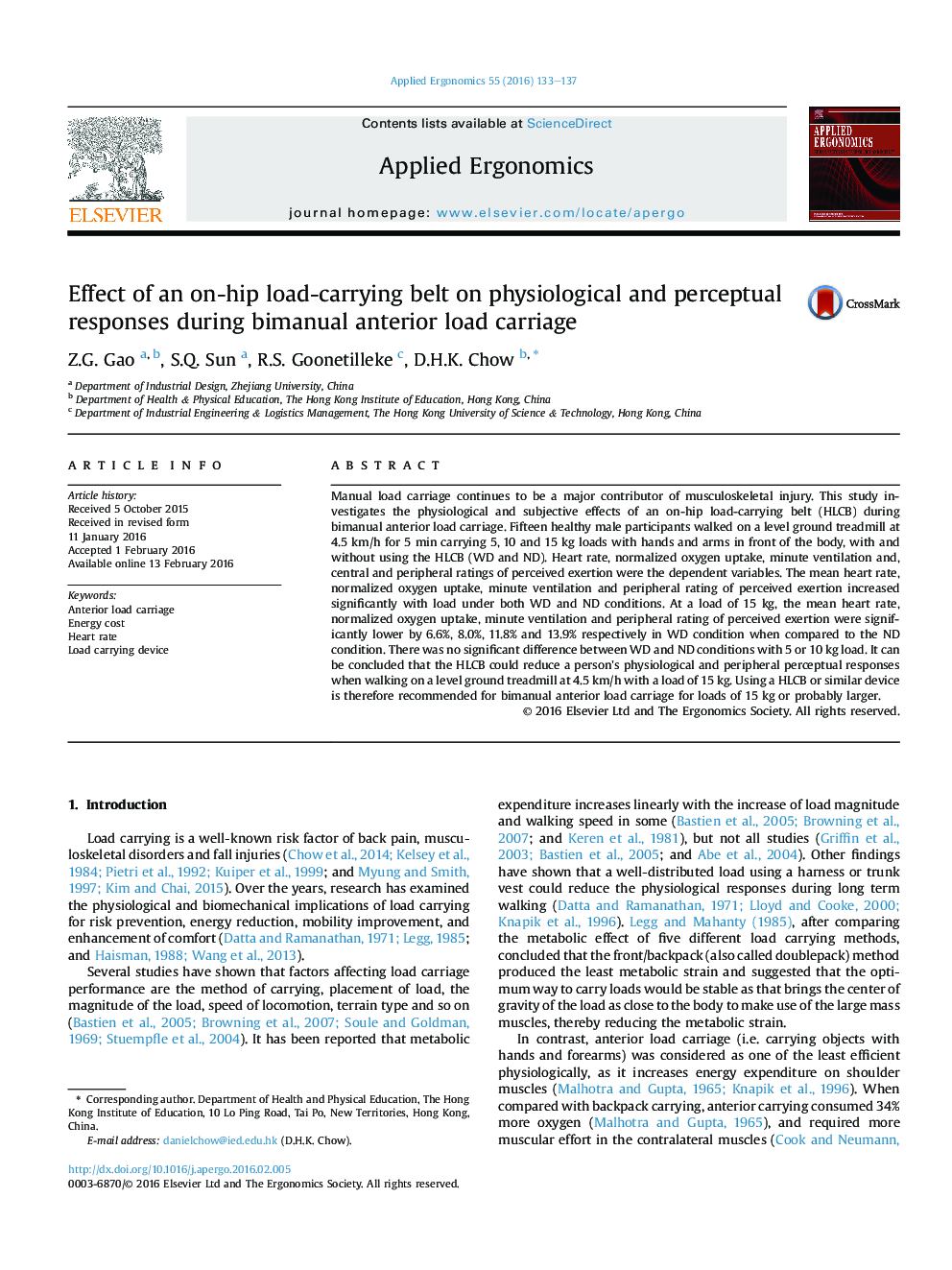| Article ID | Journal | Published Year | Pages | File Type |
|---|---|---|---|---|
| 6947860 | Applied Ergonomics | 2016 | 5 Pages |
Abstract
Manual load carriage continues to be a major contributor of musculoskeletal injury. This study investigates the physiological and subjective effects of an on-hip load-carrying belt (HLCB) during bimanual anterior load carriage. Fifteen healthy male participants walked on a level ground treadmill at 4.5Â km/h for 5Â min carrying 5, 10 and 15Â kg loads with hands and arms in front of the body, with and without using the HLCB (WD and ND). Heart rate, normalized oxygen uptake, minute ventilation and, central and peripheral ratings of perceived exertion were the dependent variables. The mean heart rate, normalized oxygen uptake, minute ventilation and peripheral rating of perceived exertion increased significantly with load under both WD and ND conditions. At a load of 15Â kg, the mean heart rate, normalized oxygen uptake, minute ventilation and peripheral rating of perceived exertion were significantly lower by 6.6%, 8.0%, 11.8% and 13.9% respectively in WD condition when compared to the ND condition. There was no significant difference between WD and ND conditions with 5 or 10Â kg load. It can be concluded that the HLCB could reduce a person's physiological and peripheral perceptual responses when walking on a level ground treadmill at 4.5Â km/h with a load of 15Â kg. Using a HLCB or similar device is therefore recommended for bimanual anterior load carriage for loads of 15Â kg or probably larger.
Keywords
Related Topics
Physical Sciences and Engineering
Computer Science
Human-Computer Interaction
Authors
Z.G. Gao, S.Q. Sun, R.S. Goonetilleke, D.H.K. Chow,
